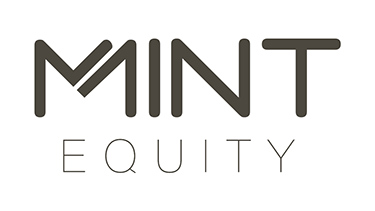Unless you have cash to cover the full amount of a property purchase (wouldn’t that be nice!), there are two key financial components to buying a property; your deposit, and a home loan.
The bigger your deposit, the lower the home loan required. But there is still a barrier to entry for many people who struggle to save both the deposit and the cash required to cover additional costs such as stamp duty and Lenders Mortgage Insurance (LMI).
This is where the government wants to help struggling First Home Buyers with the First Home Buyer Deposit Scheme.
Before we review the scheme, it’s important to understand what costs are associated with buying a property and the lender costs.
Lenders Mortgage Insurance (LMI)
What is LMI and why does the government want to be your guarantor for the LMI component? Lenders Mortgage Insurance is a fee payable by the consumer if they need to borrow more than 80% of the property value from the bank. This insurance only covers the lender, not the consumer.
The more money you borrow from the bank the higher the LMI costs are.
As First Home Buyers are struggling to save 20% or even 10% deposit of the property value, the government wants to help those who have managed to save a 5% deposit, by going guarantor on the LMI costs associated with the higher loan amount.
The government will underwrite their home loans and will serve as the guarantor for the LMI component. Beneficiaries of the scheme will be able to receive support from the program for the life of the loan or until the mortgage is refinanced.
As you can see from the table below, depending on the purchase price, a FHB’s cost are dependant on how much deposit they can provide. The higher the deposit, the lower the ongoing loan repayments. The lower the deposit, the higher the LMI costs and repayments.
Costs associated with buying a property
Saving for a large deposit is the best way to keep your costs down. However, in some cases, it is financially beneficial to enter the property market, rather than wait until you have a larger deposit. Capital growth in the property may exceed the entry costs and leave the consumer in a better position, than waiting a few years to save and missing out on the property value increase.
We’ve created two sample scenarios; purchasing a property at $650,000 where the First Home Buyer qualifies for a full exemption on stamp duty under the NSW government’s First Home Buyer stamp duty exemption scheme, and a second scenario where the purchase price is $750,000 and the stamp duty concession is only partial.
You’ll see from the examples that in addition to the deposit, there are additional costs First Home Buyers need to save for, particularly for those with only a 5% deposit. Whilst we don’t know the details of the scheme yet, you can see the massive increase in LMI costs when you borrow more than 90%.
If you are looking to buy a property in the future, have a chat to a mortgage broker at Mint Equity. We offer free guidance on how to prepare for a home loan, savings plan and we review your borrowing capacity so you know exactly how much you can borrow and what property costs you can afford.
What we know about the First Home Buyer Deposit Scheme
The scheme will start by January 2020
The scheme will be available to single first-home buyers earning up to $125,000 annually and couples taking home up to $200,000 per year.
First Home Loan Deposit Scheme helps eligible first home buyers purchase a house with a deposit as low as 5%.
The government has indicated that only 10,000 borrowers each year would be eligible for the reduced deposit rate.
First home buyers could save around $10,000 in Lenders Mortgage Insurance under the scheme.
The value of homes that can be purchased under the Scheme will be determined on a regional basis, reflecting the different property markets across Australia.
The National Housing Finance and Investment Corporation will partner with private lenders to deliver the First Home Loan Deposit Scheme, prioritising smaller lenders to boost competition.
What we don’t know about the First Home Buyer Deposit Scheme
If First Home Buyers could only save $10,000 under the scheme and the LMI for a $650,000 loan with a 5% deposit costs $24,224 – will the First Home Buyer still need to pay the remaining LMI of $14,224?
What is the maximum purchase price that will be eligible for the scheme?
Will there be any other eligibility criteria for the scheme?
Can First Home Buyers who are using a deposit bond also access the scheme?
Can First Home Buyers who have received gifted funds or guarantor funds as a deposit be eligible or will they need to prove they have saved the 5% deposit?
If you are a First Home Buyer and this all seems overwhelming, don’t panic. Have a chat to the Mint Equity team to find out exactly what your expected costs are and how to minimise them. Start the conversation today and work with the Mint Equity team to prepare your savings plan so you know exactly how much you can borrow and what property costs you can afford.
Photo courtesy of Elle Hughes from Pexels


